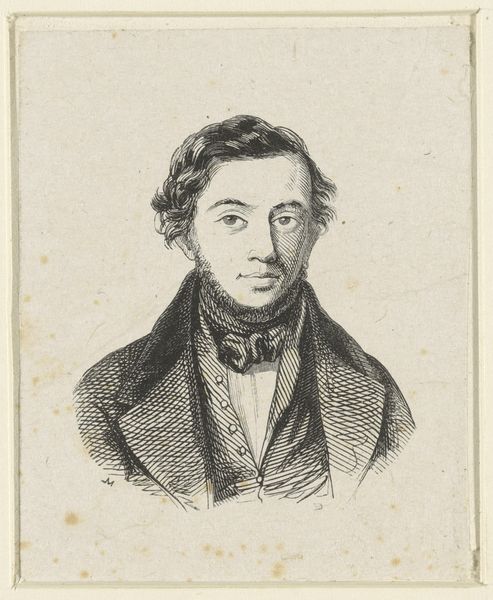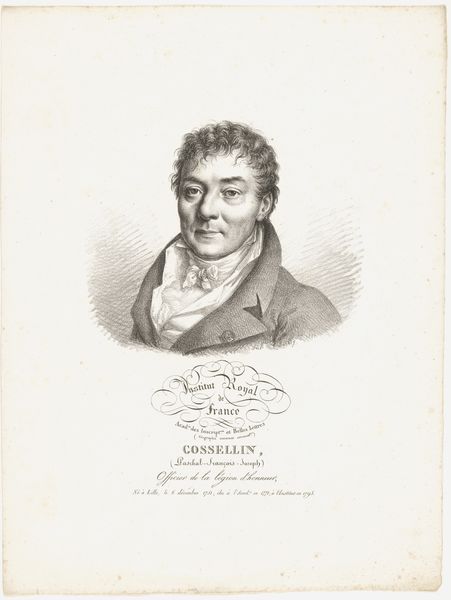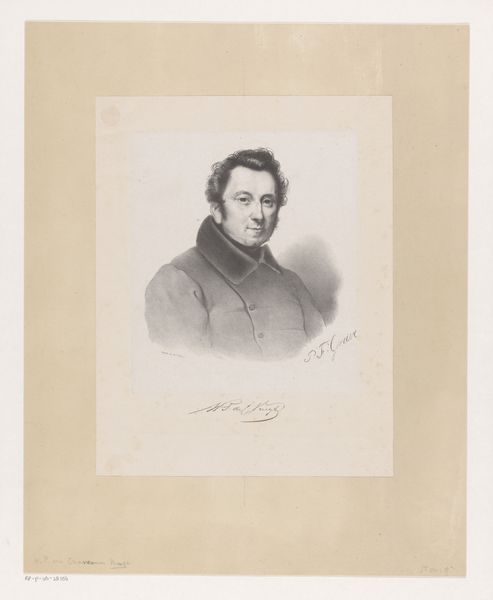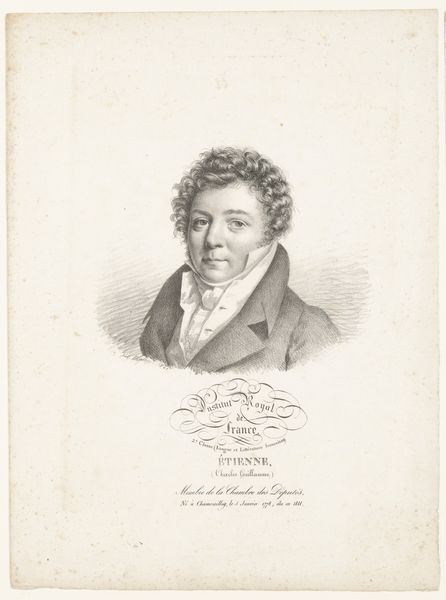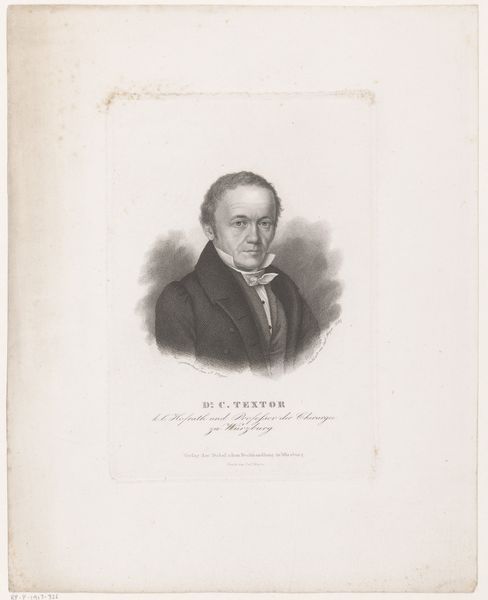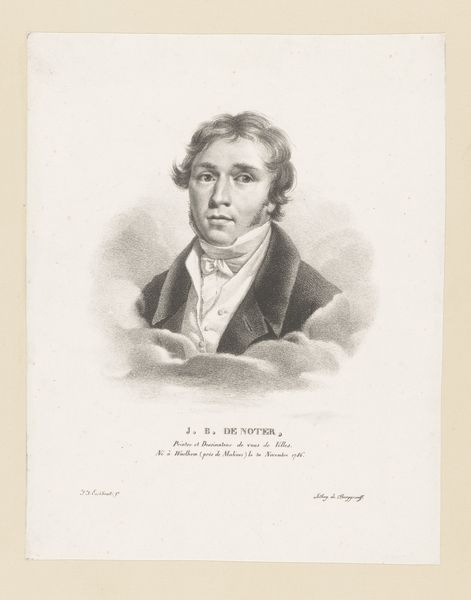
drawing, print
#
portrait
#
drawing
#
neoclacissism
# print
Dimensions: Sheet: 14 3/16 x 10 9/16 in. (36 x 26.9 cm) Image: 5 7/8 × 7 3/16 in. (15 × 18.2 cm)
Copyright: Public Domain
Curator: Looking at this rendering of Joseph-Louis Gay-Lussac dating back to 1822 and on display at the Metropolitan Museum of Art in New York, one immediately notices its clean, crisp execution, wouldn't you agree? Editor: Yes, striking, yet understated. It feels very proper, and almost scientific in its detached observation of the subject, like an equation elegantly rendered. Curator: Exactly. As a print, likely a drawing, it demonstrates a fascinating moment in the commodification of the scientific persona through reproductive technologies, showing us a precise record, in multiples, made possible through careful labor and specialized materials. Editor: So it's about access? This makes sense with its straightforward depiction, focusing all the details on the face and shoulders with some inscription on the bottom. But in contrast to this seemingly democratizing aim, I get a strong impression of social stratification from his tailored jacket and the suggestion of lace or careful knotting at the neck. He looks so carefully constructed, so unlike anyone I know. It gives the piece a melancholy distance, a quiet loneliness despite the crisp details. Curator: An astute reading! Notice how printmaking allowed for broader distribution than a unique painting. Think of the skill involved in producing multiple, near-identical impressions. This contrasts high art as individualized creative acts versus crafted reproducible knowledge. We have to examine the artist's labor in light of social systems like academies or emerging bourgeois desires. It wasn’t just about ‘art’; it reflected structures. Editor: Yes, absolutely. The intersection between art and knowledge production feels key. Even something like the paper used probably speaks volumes about manufacturing processes, global trade... the raw material in this artwork goes beyond just lines. As to my perspective, it's a great way to examine these prints as a way for regular folk like me to have a closer look at the powerful folks who contribute to society! Curator: And I think it's useful to think beyond his status. Editor: Absolutely, It's a perfect case study in considering an artwork’s place in its technological and social moment. The drawing feels strangely both of-the-moment and suspended in time... which is always so moving for me. Curator: Indeed. Examining production enriches the piece, while your impressions illuminate an ongoing dialog across time.
Comments
No comments
Be the first to comment and join the conversation on the ultimate creative platform.
